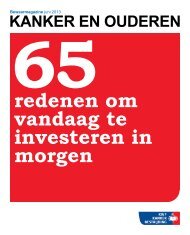diabeticfootulcer
diabeticfootulcer
diabeticfootulcer
You also want an ePaper? Increase the reach of your titles
YUMPU automatically turns print PDFs into web optimized ePapers that Google loves.
20<br />
Particular care should be taken in differential diagnosis,<br />
as a fungating malignant ulcer can mimic a hypertrophic<br />
granulation tissue.<br />
Case Report:<br />
A 55 years old female patient, diabetic, on insulin therapy<br />
for the past few years, presented with a non-healing ulcer<br />
over the past 6 months, over the inferolateral aspect of<br />
left heel (Fig 1).<br />
On examination the ulcer was about 5×5 cms, with<br />
slightly indurated and unhealthy margins. The ulcer floor<br />
had a dusky red fungating mass filling almost the entire<br />
floor, slightly indurated, fragile and adherent to the ulcer<br />
base. The mass was not tender but has occasional foul<br />
Fig 1- Ulcer Pre treatment<br />
IJPMR 2013 Mar; 24(1) : 19-22<br />
smelling discharge and caused difficulty in donning a<br />
foot wear. Also it bled whenever the patient walked<br />
barefooted for a few distances. She had symmetric<br />
sensory peripheral neuropathy of both lower extremities.<br />
Peripheral pulsations were all normal in the lower<br />
extremities. Because of the bleeding mass and ulcer, the<br />
patient was physically, socially and psychologically<br />
incapacitated. She had undergone multiple therapies,<br />
including indigenous treatment, but none has given her<br />
a permanent cure. She was advised surgical removal of<br />
the excess granulation tissue by her diabetologist, but<br />
she was not willing for surgery. Then she was referred<br />
to our department for any non-surgical options in her<br />
management.<br />
We did a thorough literature search for the possible<br />
management options and came across many different<br />
options, many of which she already had tried, and many<br />
which were not locally available. Among those methods,<br />
the utility of topical imiquimod, an immunomodulator<br />
with anti-angiogenic properties was demonstated by Lain<br />
and Carrington 4 , in a patient with a diabetic foot ulcer<br />
with overgranulation. Their treatment protocol consisted<br />
of 4 days/week regimen of topical imiquimod at night,<br />
an enzymatic debriding agent for the remaining 3 days<br />
and morning application of mupirocin cream. They<br />
reported a good ulcer healing in 7 months time.<br />
Imiquimod cream was locally available, since it is used<br />
by dermatologists in the management of perianal and<br />
genital warts, actinic keratosis, basal cell carcinoma,<br />
keloids etc. We discussed this treatment option with the<br />
patient and caregivers, with explanation of the benefits<br />
and possible side-effects and the need for a strict<br />
compliance to the regimen. We adopted a modified<br />
protocol since enzymatic debriding agents were not<br />
locally available. We used topical imiquimod 3 days per<br />
week and for the remaining 4 days, special moisture<br />
Fig 2- 6 Weeks Follow-up<br />
Fig 3- 12 Weeks Follow-up<br />
Fig 4- 18 Weeks Follow-up<br />
Fig 5- 24 Weeks Follow-up<br />
September Issue-2012 (3rd Proof)




